When training horses, as an equestrian we must ensure that we work our horses as safely as possible. After all there is nothing worse than your horse getting injured, which will mean time off work. With that said we Equestrians take precautions to prevent any unnecessary injuries such as knocks, bangs or over reach injuries that may occur during exercise or while travelling.
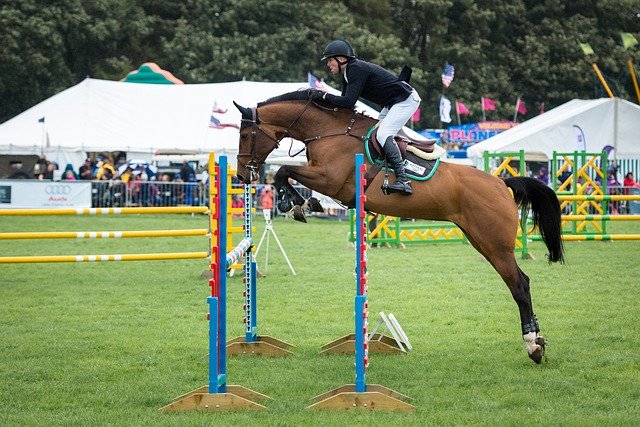
This is why when you see a Dressage Rider Schooling with Exercise Wraps, or the Showjumping rider or Event rider training their horse; they have the animal all booted up to prevent injury. Here we will discuss why you need to use boots, the function of the different types of boots and when it is advisable to use them.
Why Do You Need To Use Boots on Your Horse?
The main reason that you will use boots or bandages on your horse is to prevent injury (bandages are also used for support post injury). When the horse is shod it makes the horse even more susceptible to a limb injury, particularly when being ridden. The horse is genetically designed to graze wide open plains and to flee from predators in a straight line. Therefore, when we work our horses on turns and circles, they have a greater chance of injuring themselves, particularly when shod.
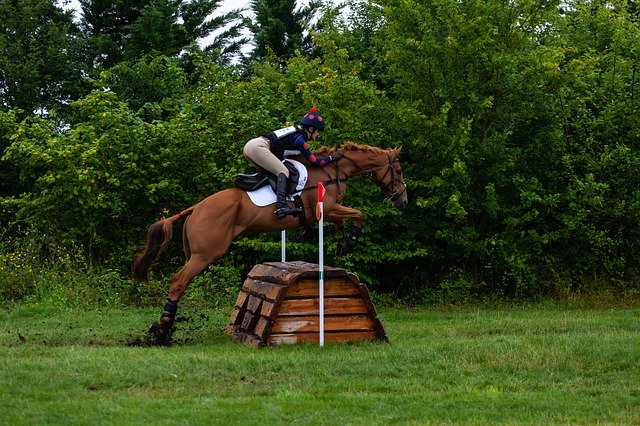
The jumping horse has an even higher risk of injury, both while being ridden and when loose jumping and jumping on the lunge. This risk becomes even greater when galloping the horse cross country, such as while eventing, doing hunter trials or evening during cross county schooling.
By using boots when we are schooling, riding, jumping and competing the horse, we are protecting him and reducing the risk of injury to his limbs, and therefore aiming to minimise or eliminate any time off work.
Boots or Stable/Travelling bandages are also used when travelling the horse, again to offer the horse support and protection when they are in a trailer or lorry. The bumps and bounces of a moving vehicle can affect the balance of the horse occasionally, and therefore it is a good idea to protect their legs just in case they either knock or step on themselves during transit. Again, the use of boots or bandages in this scenario is to prevent unnecessary injury.
The Types of Boots and when to use them.
Here we have compiled a list of the most common protective boots for horses and we discuss when you are likely to use them on your horse;
Brushing Boots
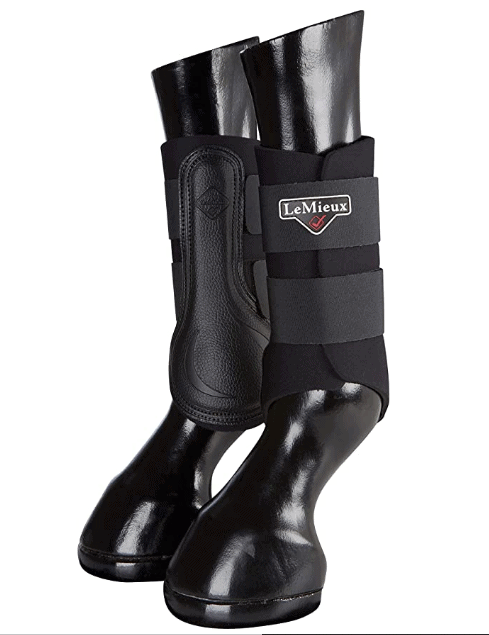
These are usually a light weight boot, and just as their name suggests they are used to prevent the horse from knocking/brushing his limbs against each other during work. Some horses brush, i.e. move their opposite limbs very closely during work, often banging or brushing against the other limb during movement. This can cause the horse to injure himself particularly when shod. These boots are usually light and are a great every day boot for riding on the flat, and protecting the horse during ridden work. Some brushing boots are a little more robust than others and will also offer the horse some protection to the front tendons during jumping, should the horse should strike into himself.
Tendon Boots
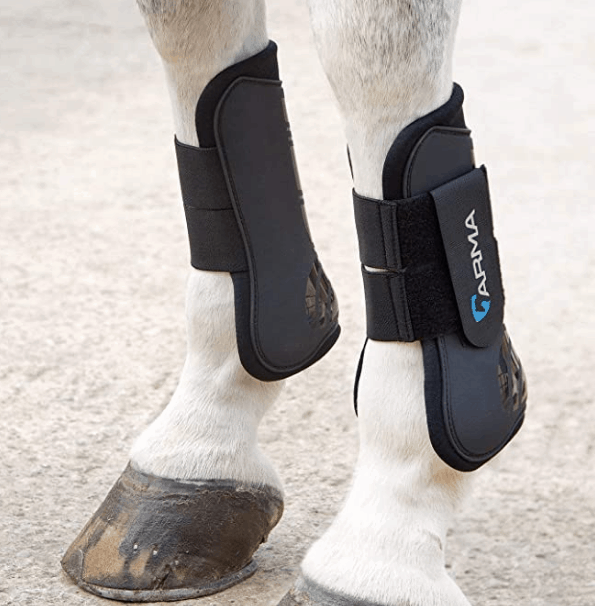
Tendon boots are designed to protect the tendons during both work on the flat and jumping. The outer shell of the tendon boot tends to be made of a tougher material than brushing boots, to offer tendons of the horse more protection during jumping, especially if the horse should knock himself. They also offer protection against brushing and are usually quite well ventilated to ensure that the tendons don’t over heat during intense work such as jumping. They often come in a set of 4, the hind pair of boots are a small half boot designed to offer the horse protection against brushing during their work.
Eventing Competition Boots.
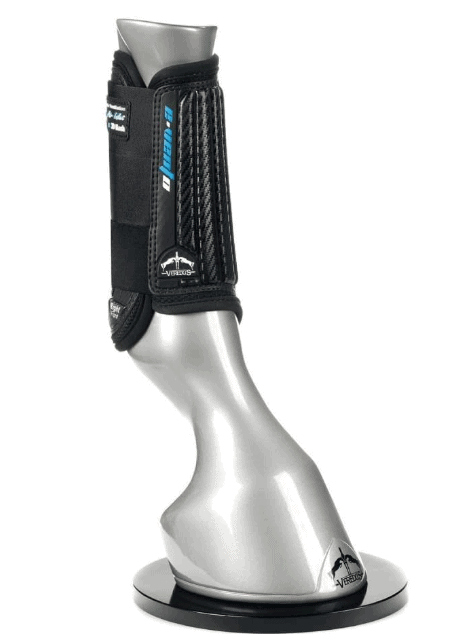
In past years we used to bandage the horse all round for galloping cross country, however nowadays there are some pretty amazing boots available that not only support and protect the horse from knocks when jumping cross country, but also are so well ventilated that they help to keep the animals tendons cool, even during intense exercise. These boots are the ultimate in protection and are designed to not only to protect and support the tendons but to remain in position during the rigours of competition.
Over Reach Boots.
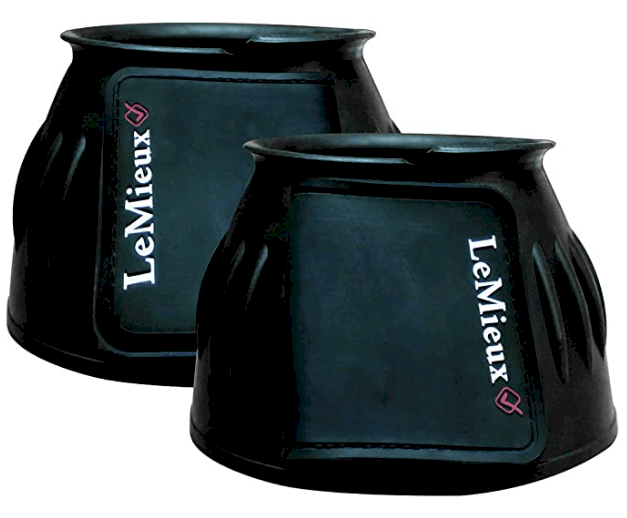
Many athletic horses will overreach during work, some horses have such use of their hind limbs while working, that regular use of overreach boots will be necessary, particularly when jumping. Over reach boots are the bell shaped boots that sit down over the hoof and heels of the front feet of the horse. These boots protect the horse’s heels from being struck into by the hind limbs. Often a horse that is prone to this type of injury will also require a little assistance from the Farrier, who will roll the toe of the hind shoe and set it back a little to minimise the chance of injury. Over reach boots come in many shapes and sizes, and if you are jumping or have an athletic horse they are a useful tool to have in your tack room.
The Sausage boot.
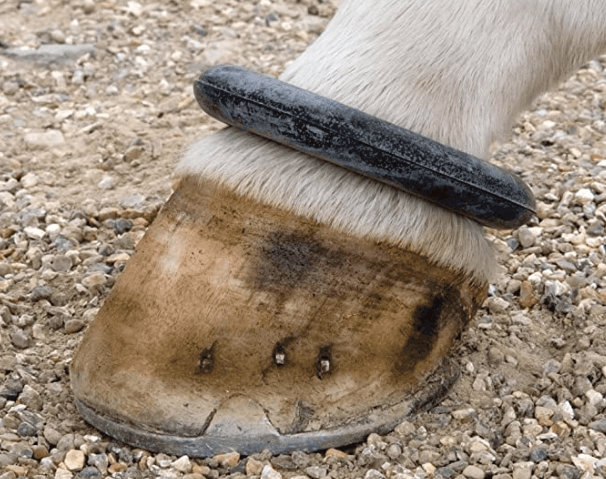
This boot is used on horses that brush very low behind, i.e. they are usually striking into themselves either on the pastern or coronary band. The Sausage boot is designed to be worn on one hind leg to prevent this type of brushing. I have normally only seen these used on older animals in riding centres.
Knee Boots
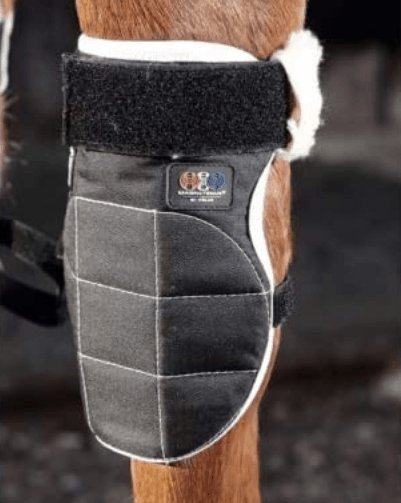
Knee Boots are used for hacking your horse on hard ground, however nowadays we seem to be on the road hacking less and less, so these boots are not as widely used anymore. They are designed to protect the knees of the horse if he should stumble and fall out hacking. Knee boots can also be used when travelling a horse long distance, to protect the animal during transit from any knocks. The more modern types contain magnets for a therapeutic effect if the animal has sustained an injury.
Hock Boots.
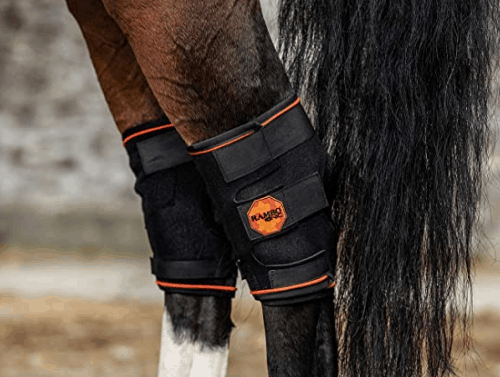
Hock Boots are mainly used when travelling valuable animals’ long distances. I have known some horses that seem to injure themselves constantly in the stable, banging their hocks, and I have witnessed hock boots being used in this scenario. However the main use of Hock Boots is to protect the horse during travelling, particularly long distances.
Travelling Bandages
Travelling Bandages are used to protect the horse during travelling, particularly long periods. The Fibregee is usually quite long to offer protection; however, these bandages can be used in conjunction with Knee Boots and Hock boots to offer the animal extra protection during long haul trips. In most cases travelling bandages have been replaced by the invention of the travelling boot, which is quick and light and easy to fit, and generally is sufficient for shorter trips.
Travelling Boots.
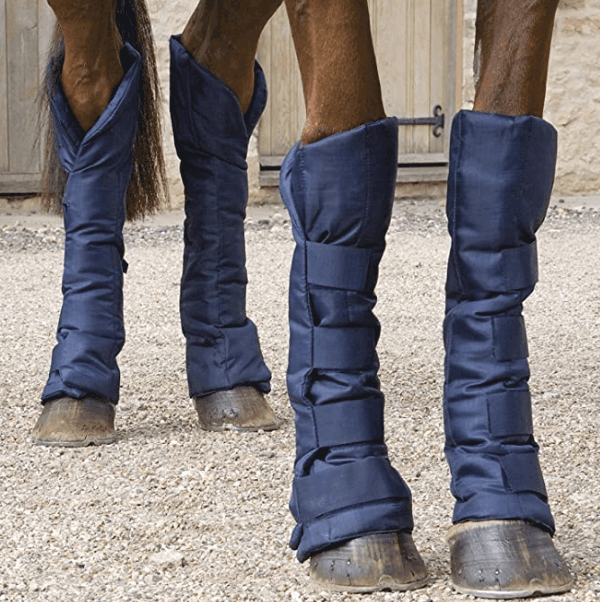
Travelling Boots, are a great invention, they are quick and easy to fit, allow the horse’s legs to breath and also protect the knees and hocks of the horse without the need for other boots. For most of your regular trips travelling boots will offer your horse ample protection.
Conclusion: As with all aspects of horse care prevention is better than cure. When schooling or training, particularly young horses that are learning their trade, it is wise employ the use of boots to prevent those unnecessary knocks or bangs. In the long run it will save you valuable time in your training schedule with your horse. (Pictures – www.amazon.co.uk & www.pixabay.com)
This article was originally published in the July 2020 Issue of Irish Sport Horse Magazine.
